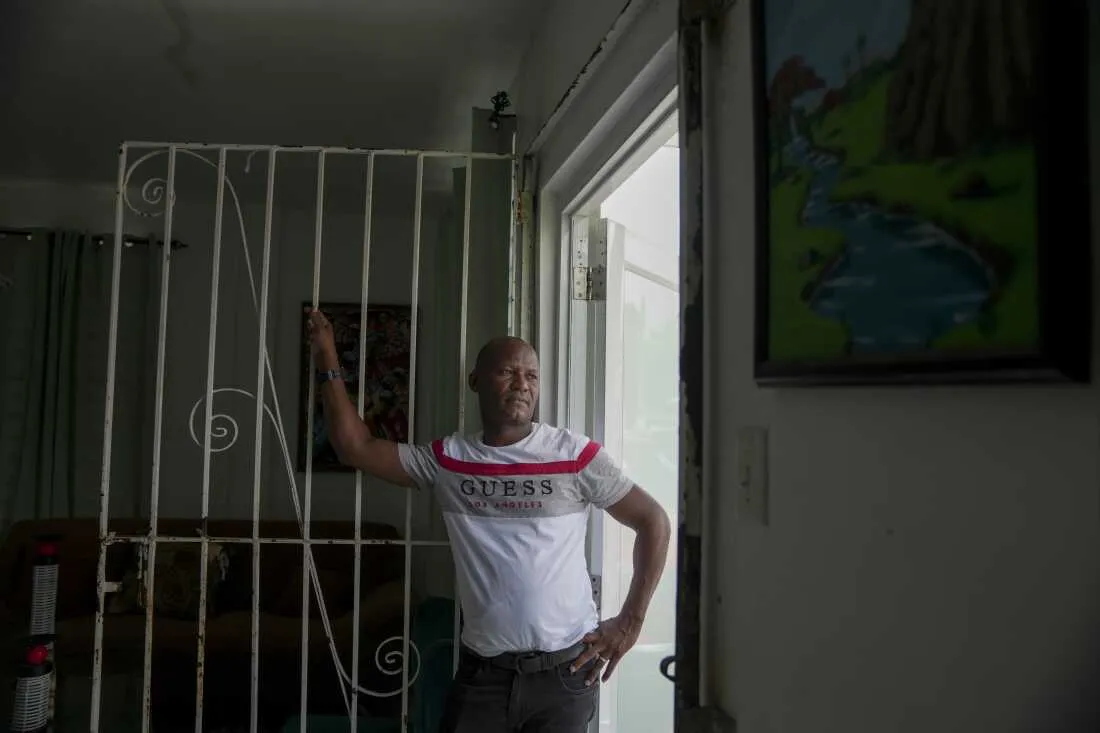The Impact of Immigration Raids on Daily Life in Puerto Rico’s Dominican Enclave
In recent years, Puerto Rico has seen an unsettling rise in immigration raids, particularly in areas densely populated by Dominicans. The experience of these communities can be profound, as mothers duck into alleys, and families modify their daily routines to avoid detection. This seismic shift in societal behavior brings questions not just about immigration policy but the human stories intertwined with these changes.
‘You Barely See People Out’
The streets in some of Puerto Rico’s Dominican neighborhoods have fallen eerily quiet since the uptick in immigration raids. Residents are opting to stay home, taking precautions that twist the fabric of communal life and interaction. “You barely see people out anymore,” laments Elena, a long-time resident of Santurce, a neighborhood that once bustled with life.
Elena’s observations are echoed by many others; local businesses suffer as customers prioritize their safety over shopping. “There used to be a vibrancy here, but people are frightened,” she explains. The increasing frequency of raids has turned social spaces into zones of anxiety where fear now overshadows friendship and familiarity.
Why Immigration Raids in Puerto Rico Hit Differently
Unlike the mainland United States, Puerto Rico’s historical ties with the Dominican Republic create a unique context for these immigration raids. Puerto Ricans often share familial bonds with Dominicans, causing the immigration enforcement actions to feel more personal and invasive.
Gonzalo, an immigration lawyer based in Ponce, describes the significant differences in how enforcement affects communities in Puerto Rico. “On the mainland, raids often happen in isolation from a community’s cultural context. Here, it reverberates throughout entire families and neighborhoods.” The interconnectedness blurs the lines around legality and humanity, leading many to question the moral implications of such enforcement tactics.
Concerns About Racial Profiling
As immigration arrests rise, racial profiling emerges as a pressing concern among residents and advocates. Many Dominican Puerto Ricans find themselves in precarious positions as suspicions often arise based solely on their appearance. Activist Maria Lopez remarks, “It’s not just about immigration law; it’s a systemic issue that affects how we perceive each other across racial lines.”
For many, the fear extends beyond just being arrested or deported; it encompasses the anxiety that comes with constant scrutiny when exiting their homes. Racial profiling further alienates these communities, pushing them to explore larger identities while grappling with their historical depiction in media and society.
Adapting to a New Normal
In response to the increased risk of raids, Dominican communities are heavily adapting their daily habits. Families now plan outings around the possibility of law enforcement activity. This tactical shift has even reached schools, as parents opt to keep children home during raids.
Local schools are also responding to the fears enforced by the changing milieu. Principals are instituting safer environments by ensuring that all parents feel secure in sending their children to school. Programs like outreach initiatives focus on teaching families about their rights and ways to seek legal help if confronted by immigration officers.
A Humanitarian Perspective
Advocates argue for a greater understanding of the human dimensions of the raids, urging officials to take a step back and consider the ramifications on family structures and community health.
Organizations such as “Alianza Dominicana” work tirelessly to assist families, but they face substantial challenges as resources dwindle and demand grows. They serve as lifelines, offering deportation defense workshops and mental health resources for families that have been traumatized by the fear of sudden separation.
The Role of Law Enforcement
Local law enforcement agencies are also caught in a difficult position. On one hand, they are expected to cooperate with federal immigration enforcement; on the other, they are tasked with maintaining community trust. “It’s challenging,” says Police Chief Juan Reyes, “We want to enforce our laws, but we don’t want to create a culture of fear that leads to crime going unreported.”
What emerges from this dilemma is the call for community policing strategies that emphasize safety without compromising residents’ rights. Marketed as strategies to bridge gaps, these approaches aim to foster cooperation between law enforcement and the communities they serve amid the complicated realities of immigration policy.
Hope Amidst Challenge
Despite the overwhelming challenges, stories of resilience abound within Dominican communities in Puerto Rico. Local leaders work tirelessly, organizing workshops that promote awareness about one’s legal rights while fostering unity through cultural events. Many communities have turned the fear into fuel for activism, pushing back against the raids by rallying for change.
In their fight, many have discovered allies—including religious groups, local politicians, and social justice organizations—who support their cause. “We refuse to let fear dictate our community’s future,” asserts Maria, driven by determination as she leads protests demanding justice and fair treatment.
Looking Forward
The reality in Puerto Rico’s Dominican enclaves remains fluid. The story is not just about immigration but the narratives of people caught in the crossfire of political dynamics and a shifting cultural landscape.
Moving forward, maintaining community resilience requires attentiveness to policy shifts and a unified response to injustice. Immigration reform, racial equity, and community cohesion must evolve together rather than be addressed as separate issues, as the lines connecting them are unavoidably intertwined.
Conclusion
As each day passes, communities adapt to their new environment under the specter of immigration raids. The surround-sound effects transform what it means to live, work, and connect. With vigilance and a commitment to justice, these communities aim to reclaim their spaces, ensuring that their stories continue to echo in the vibrant landscapes they call home.







